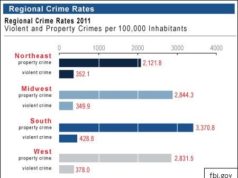
Crime Defined In Depth
Crime is a broad concept that is defined differently across the world. In this article, we will explore the definition and types of crime, the factors that contribute to criminal behavior, and the impact of crime on society.
The Definition of Crime
Crime is generally defined as any act or omission that is prohibited by law and punishable by the state. This definition includes crimes against people (such as murder, assault, and rape), property crimes (such as theft and vandalism), and white-collar crimes (such as fraud and embezzlement).
Types of Crime
Crimes can be categorized in several ways:
– Violent crimes: These are crimes that involve the use or threat of violence against a person, such as murder, assault, and robbery.
– Property crimes: These are crimes that involve the destruction or theft of property, such as burglary and theft.
– Drug-related crimes: These are crimes that involve the use, distribution, or manufacture of illegal drugs.
– White-collar crimes: These are non-violent crimes committed in the course of business that involve deception or fraud, such as insider trading or embezzlement.
Factors that Contribute to Criminal Behavior
There is no single cause of criminal behavior, but several factors have been found to contribute to it:
– Genetics and biology: There is evidence to suggest that some people may be predisposed to criminal behavior because of genetic or biological factors.
– Environmental factors: Factors such as poverty, exposure to violence, and lack of education or opportunity can contribute to criminal behavior.
– Psychological factors: Mental illness and substance abuse are both associated with an increased risk of criminal behavior.
The Impact of Crime on Society
Crime has a significant impact on society, affecting individuals, families, and communities in a variety of ways:
– Physical harm: Crime can cause physical harm to victims, including injuries and death.
– Psychological harm: Victims of crime can also experience psychological harm, including PTSD, anxiety, and depression.
– Economic impact: Crime can result in financial losses for victims and communities, as well as increased costs associated with law enforcement and the criminal justice system.
– Social impact: Crime can create fear and mistrust within communities, eroding the social fabric of society.
Conclusion
Crime is a complex issue that has far-reaching effects on society. Understanding the definition and types of crime, as well as the factors that contribute to criminal behavior, is essential in the effort to prevent and address crime. The impact of crime on individuals, families, and communities underscores the importance of finding effective solutions to this issue.
What is Crime?
In its legal definition, a crime is defined as an act or activity that does not adhere to the legal protocol or standard of lawful behavior and conduct. Due to the existence of a multitude of varying legal specialties, a multitude of corollary subgenres of criminal activity exist as well. A crime can differ from another crime in a variety of means, which include:
The age(s) of the individual or individuals committing the crime;
The severity of the crime committed;
The victim(s) of the crime. This includes age(s), injury(s), and involvement;
The classification of the crime. This includes a classification in conjunction to the specific legal specialty regulating it;
The intent and forethought latent within the crime itself. This includes the examination of planning, forethought, or malice with regard to the criminal act;
The nature of the crime with regard to the involvement of extraneous factors, such as the presence of weapons, electronics, and applicable equipment;
The classification of the crime as physical or virtual;
The classification of the activity latent within the crime. This can range from financial to familial in nature.
Crime Classification
The following classification is used to categorize criminal activity within the United States Criminal Justice System:
Misdemeanor: A quantification of crime in which the maximum duration of incarceration resulting from a conviction will typically not exceed a year.
Felony: A quantification of crime in which the minimum duration of incarceration resulting from a conviction will typically exceed a year’s time. Individuals convicted of felonies can be referred to as ‘felons’.
Types of Crime
The following categorizations pertain to the varying nature of crimes and criminal activity:
Federal Crime: A crime in which the victim(s) are identified as a member, agent, employee, or official of the United States Government.
Juvenile Crime: A juvenile is defined as a minor or child who is below the age of legal adulthood, and as a result, is not entitled to the autonomy granted to individuals classified as legal adults. A juvenile crime is classified as a crime committed by an individual legally-classified as a minor.
Computer Crime: Also called ‘Cyber Crime’, computer crime is classified as criminal activity conducted through the facilitation of a computer network, computational terminal, telecommunications network, or electronic device.
White Collar Crime: Having its name derived from a colloquial socioeconomic ranking system, white collar crime is classified as crimes committed within the realm of occupations that are considered to be of higher socioeconomic esteem, typically dependent on higher or secondary education or certification. This type of crime includes financial and corporate crime.
Sex Crime: A sex crime is classified as a criminal act that involves the illicit, immoral, illegal, unlawful, and unethical practice of a sexual act. This type of crime can range from the possession of child pornography to rape.
Organized Crime: Organized crime is defined as criminal activity that is conducted as a result of the involvement of criminal groups and organizations. Typically, this type of crime involves illegal commercial activity ranging from clandestine to fraudulent in nature.




























